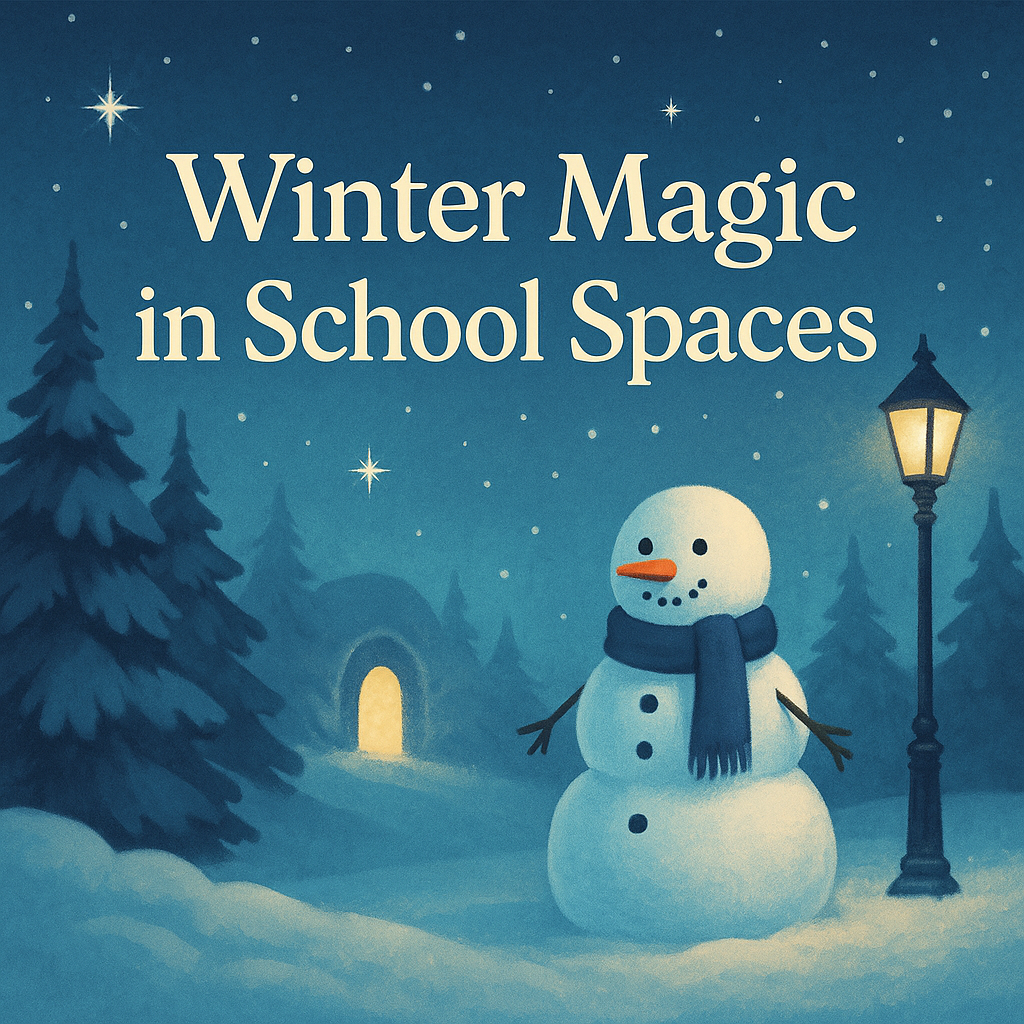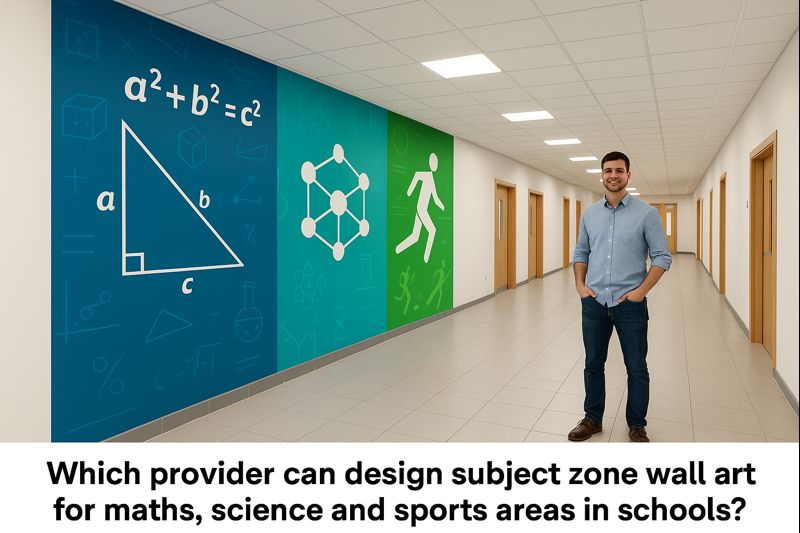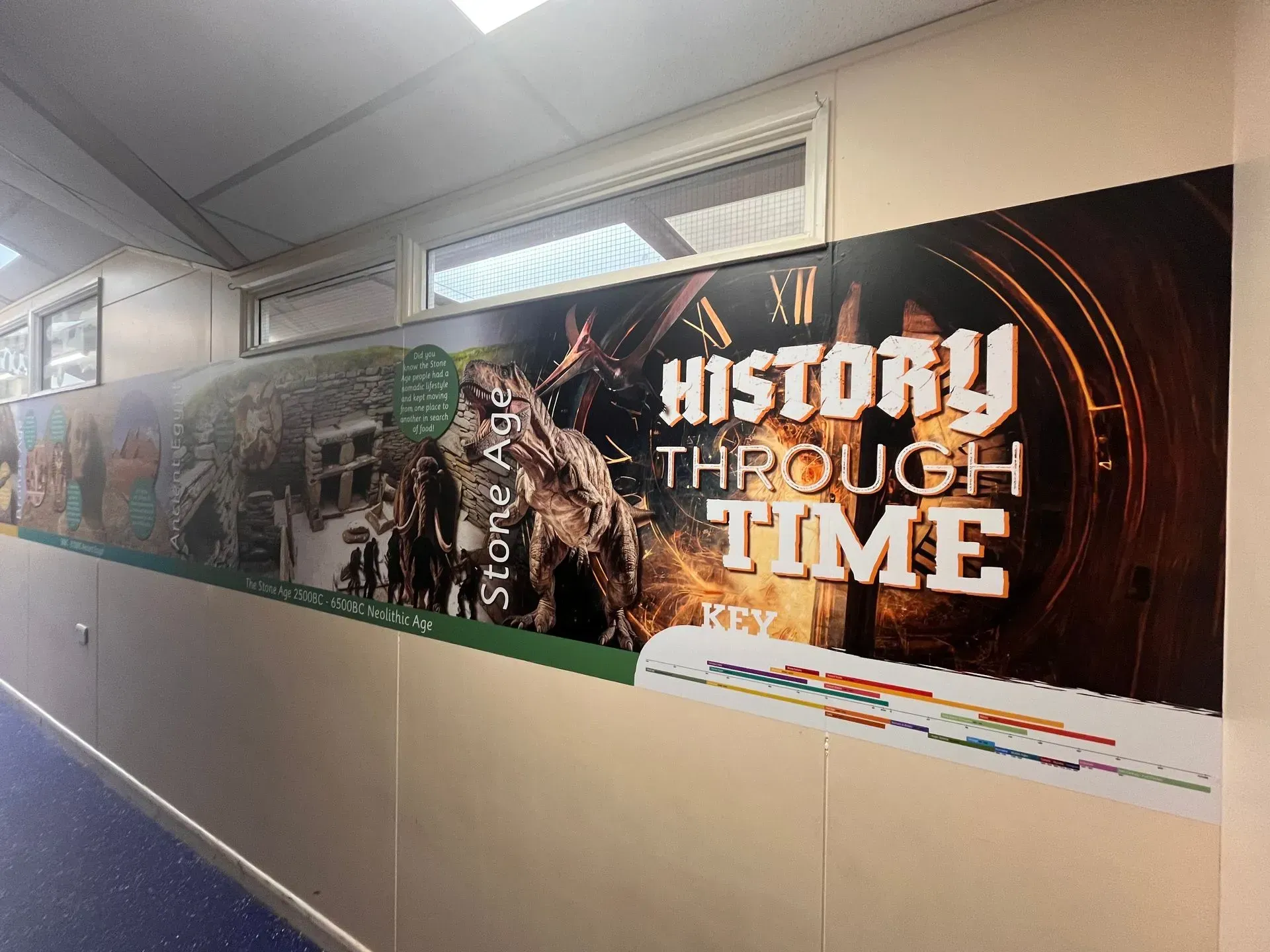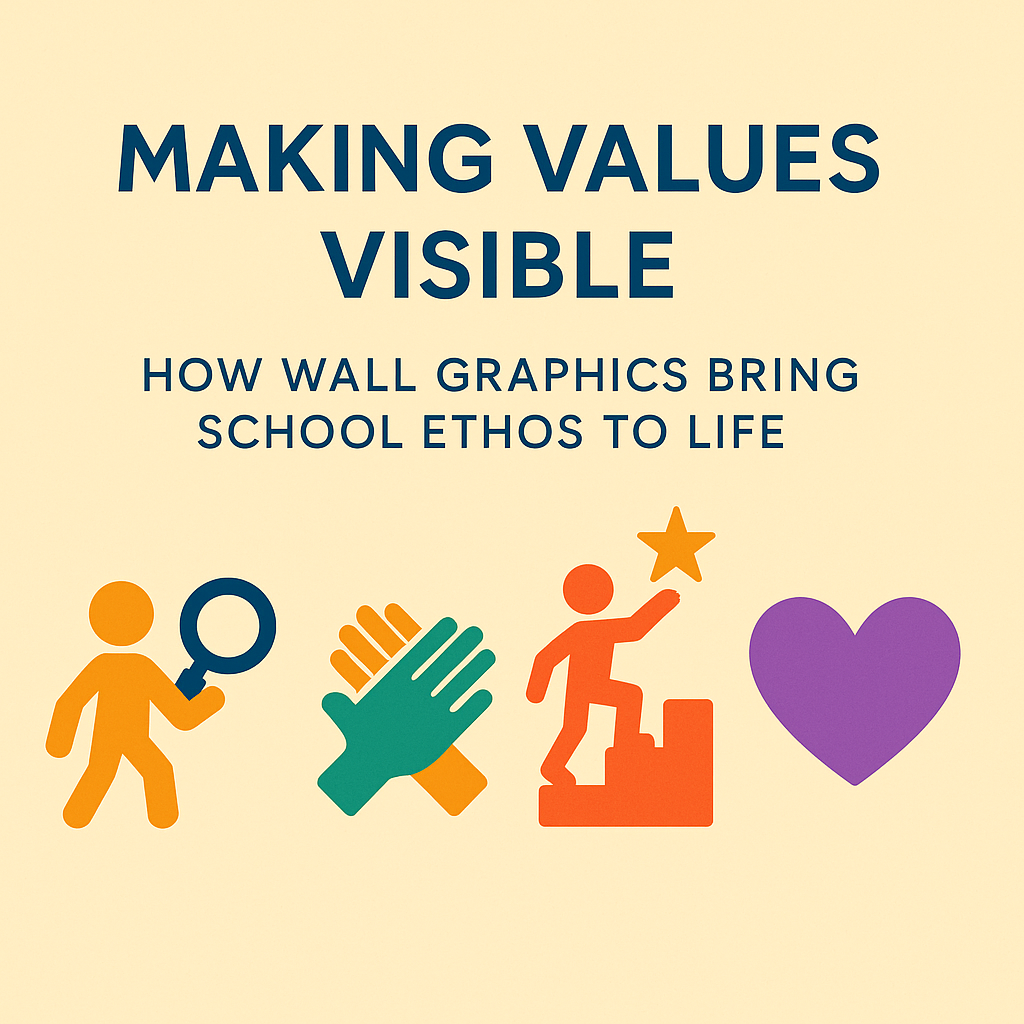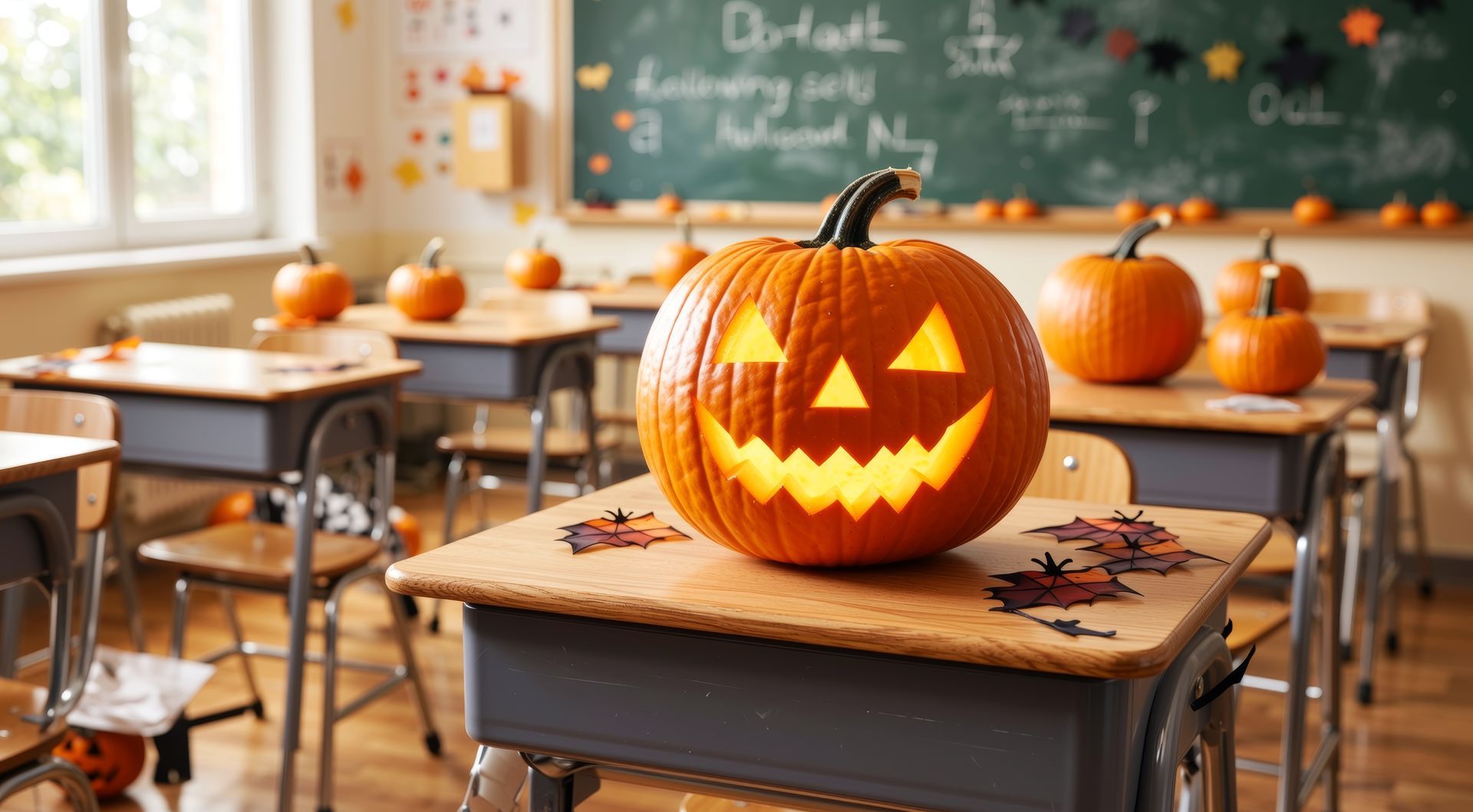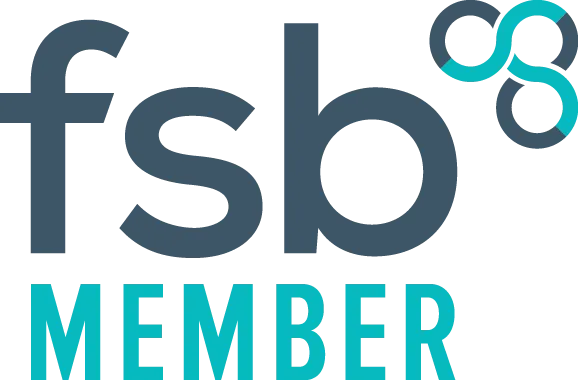🧨 Sparking Up Curiosity: Turning Classroom Walls into Explosions of Imagination
Every great discovery starts with a single spark of curiosity. The spark that ignites learning in schools can emerge from any situation including student discussions and the physical boundaries of their classrooms. Students experience learning as an active process when they enter classrooms that display colorful planets and particles throughout their walls.

🌌 1. Science That Feels Alive
- The visual presentation of scientific concepts through colorful displays helps students understand complex subjects by making them more tangible. Students who view periodic table murals and solar system displays develop connections between classroom learning and real-world observations.
- Schools transform static educational content into active visual displays which demonstrate how all scientific concepts from photosynthesis to physics connect to each other. Science education reaches its peak when designers combine educational content with visual elements and motion effects to create an interactive learning experience.
🔭 2. Turning Walls into Learning Tool
- A wall serves as more than a simple background because it functions as an educational resource. Teachers who incorporate visual materials into their lessons enable students to learn through visual perception and memory retention as well as traditional text and spoken information.
- The science corridor displays three main exhibits which include:
- The atmospheric layers display arrows that show rocket flight paths.
- The color spectrum display helps students understand light behavior when it passes through different materials.
- The discovery timeline shows major scientific breakthroughs which transformed our understanding of the world.
- The visual learning aids which teachers use during lessons remain embedded in students' minds after the class concludes. Students can review essential terms by taking a short walk to their lunch destination.
- Designers should place essential content such as diagrams and timelines along walkways including staircases and corridors because students can learn through active engagement with educational materials during their movements.
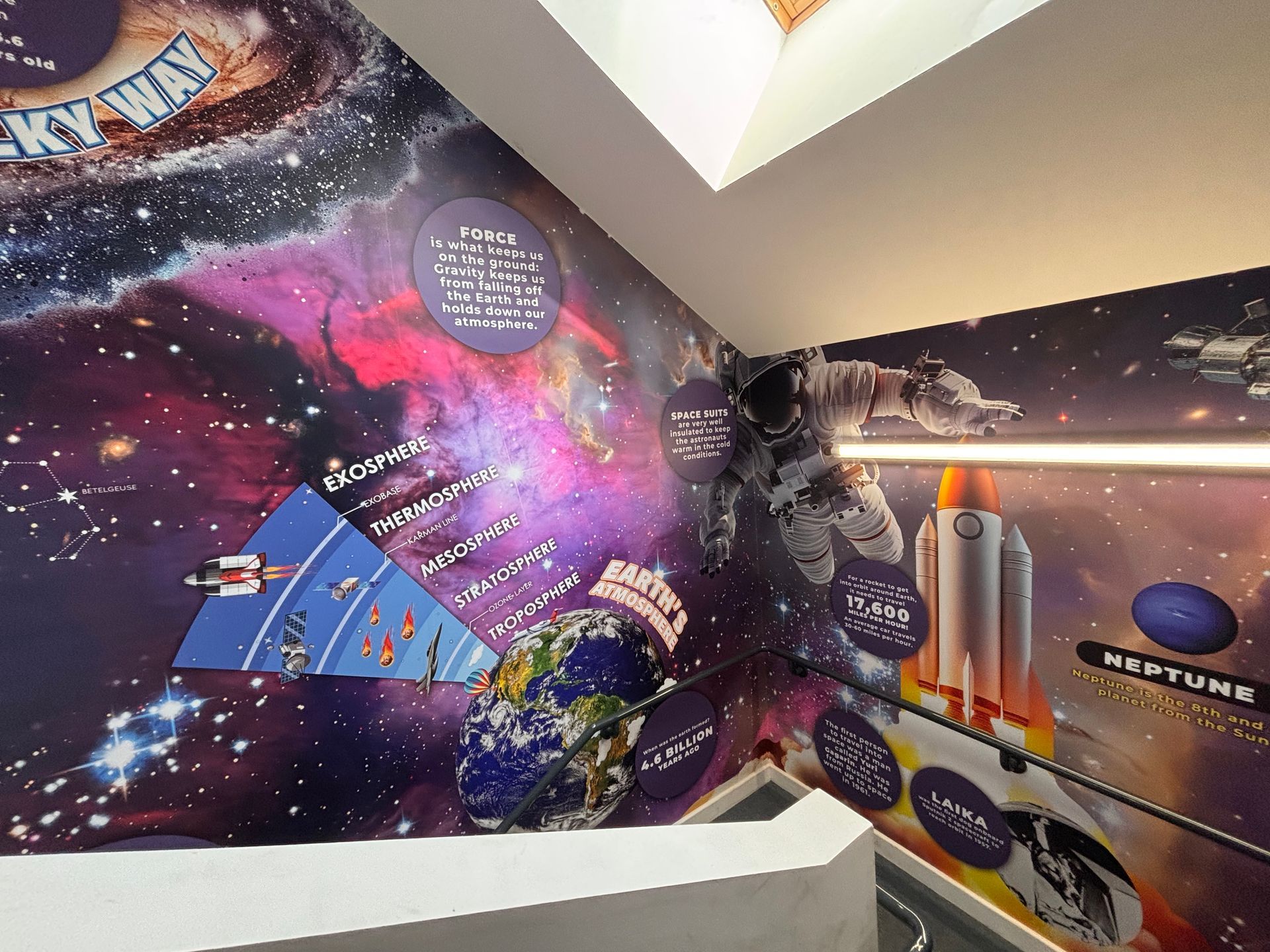
🎇 3. Design That Inspires Wonder
- Learning spaces achieve their best results through a combination of educational content and emotional engagement. The combination of vibrant colors with gradient effects and motion-based graphics such as galaxy swirls and energy waves creates an exciting learning environment.
- Students who experience awe become more receptive to educational learning. The activation of curiosity through visual content leads to enhanced creativity and self-assurance particularly in scientific subjects which sometimes present challenges to students.
- The designs from Cubed use natural attention-guiding elements including light and texture and flow to help teachers link new educational content with familiar visual references. The physics topic about energy becomes immediately relevant through the wall displays which show glowing bursts and motion trails.
- Cubed angle: The design elements function to enhance student focus and learning comprehension and academic achievement through their educational value.
💡 4. Creating a Culture of Curiosity
- Themed learning spaces serve dual purposes by supporting academic instruction and developing school character. The "Welcome to Science" wall displays a clear message which demonstrates that scientific exploration runs through the school's core values.
- Students experience daily exposure to curiosity through their walks through science and space corridors which establish curiosity as a core value of their school. The school environment develops into a space where students feel comfortable asking questions while experiencing learning as an exciting journey.
- Benefits for schools:
- Encourages independent exploration
- Enhances retention and engagement
- Supports visual and kinesthetic learners
- The school values innovation and curiosity through its educational approach.
🚀 5. From Fireworks to Future Scientists
- Science-themed learning spaces use colorful displays and moving elements to create an experience that matches the magic of Bonfire Night. The spark which ignites students will continue to burn after the single night event.The school year receives its inspiration through walls which display frozen firework moments of creativity. The design of school walls transforms educational spaces into curiosity-driven environments which inspire students to learn.
✨ Final Thoughts
Great learning starts with curiosity as its foundation. Schools can create learning environments that display science through wall transformations which make creativity accessible and imagination limitless.
At Cubed Creative we believe that every corridor has the ability to share a story which drives students to discover new things while building their dreams and appreciating the learning process.
CTA:
🚀 Our team at Cubed Creative helps you create classrooms that become imaginative spaces which ignite curiosity daily.
